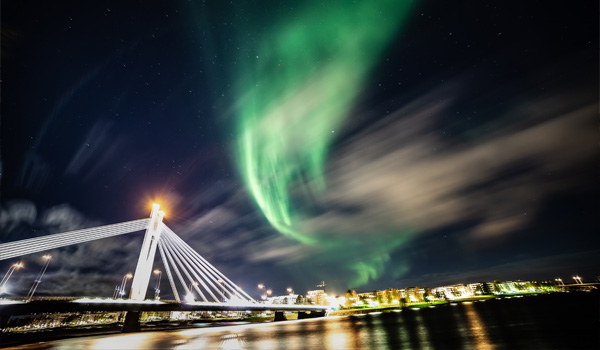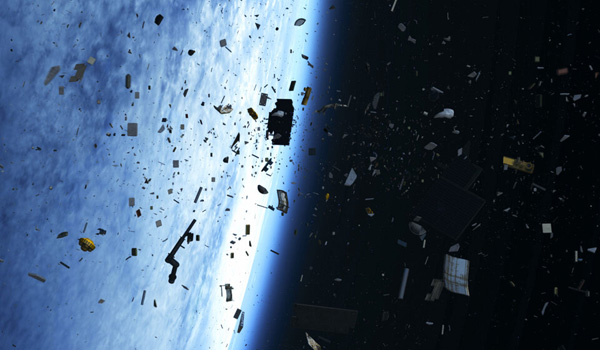At Lancaster, we are developing new neutron monitoring technologies to help us predict and prepare for severe space weather events, hoping to safeguard our technological infrastructures from the adverse effects these phenomena can have in our modern world.
Cosmic rays (CRs) are high-energy particles, mainly protons, originating from outside the solar system, likely from events like supernovae, and are called galactic cosmic rays (GCRs). These particles interact with Earth's atmosphere, and those with energies above ~500 MeV generate secondary particles through atmospheric interactions, leading to extensive air showers.
Another source of high-energy particles is solar activity, such as solar flares and coronal mass ejections (CMEs), which can accelerate ions to penetrate Earth's atmosphere. Solar energetic particles (SEPs), which can reach energies over 1 GeV/nucleon, also create secondary particle cascades. If these reach the ground, they are called ground-level enhancements (GLEs), with about ten occurring per solar cycle.
SEPs can damage solar arrays, electronics, and infrastructure, disrupting power, GPS, telecommunications, aviation, and digital systems. This makes space weather a key concern in the UK's risk management strategies. GLEs are monitored using neutron monitors (NMs), which have largely remained unchanged since the 1960s. The most common design, the NM-64, uses boron trifluoride (BF3) gas-filled proportional counters to detect neutrons from cosmic rays. The global network currently consists of about fifty monitors, blighted by component obsolescence and design deviations over their several decades of operation.
Our solution
To address shortcomings of the NM-64, modern concerns over the toxicity of BF3 and to improve efficiency, a new NM-2023 design has been developed. This more compact and cost-effective design avoids using BF3, instead optimising the use of smaller diameter neutron detectors with better material arrangement. It retains the core principles of neutron monitoring but simplifies manufacturing and reduces costs, marking the first significant advancement in this field since the NM-64.
We developed parameterised radiation transport models to explore alternative neutron detectors, their placement, and design in a CR neutron field, aiming to optimise count rate and reduce size, volume, and cost. Our simulations, benchmarked against an NM-64 model, focused on neutron detection, neglecting minor proton and muon components to keep the design simpler.
Our new 4-NM-2023 design, optimised for 1" helium-3 (3He) counters, matches the counting efficiency of a 6-counter NM-64 while being 64% smaller, 80% less in volume, and 50% cheaper. This design simplifies the structure by replacing several lead and polyethylene rings with a more compact slab layout, significantly reducing material use and costs.
The research challenge in modernising 1960's technology, and in doing so delivering an operational instrument, requires the use of radiation transport simulations, experimental validation and technology with an established supply chain. To achieve this we have collaborated with the UK Atomic Energy Authority (UKAEA) and Mirion Technologies (Canberra UK) Ltd, working closely with the UK Meteorological (Met) Office as the primary end user. The UKAEA are leading on the radiation transport code simulations used to guide our design decisions and derive the monitors response function. Mirion Technologies, as leading suppliers of radiation systems and services, led on the engineered solution and are the supplier of the instrument.
Our models have been extensively validated, performing benchmark comparisons of alternative neutron counters, a neutron monitoring survey covering the entire longitude of the UK from Cornwall to the Shetland Islands, and use of state-of-the-art facilities at the Science and Technologies Facilities Council's new ChipIr beamline dedicated to the irradiation of microelectronics with atmosphere-like neutrons; built on the second target station of the ISIS spallation source at the Rutherford Appleton Laboratory, UK.
The NM-2023 is being operationalised by the UK Met Office and will be located at one of their observatories near Cornwall, reintroducing ground-level neutron monitoring in the UK for the first time since the mid-1980s. It is set to feed data into the Met Office Space Weather Operations Centre (MOSWOC), and will provide a UK-centric data feed into atmospheric radiation models, alerts of ground level enhancements, and will even be employed by the UK cosmic-ray soil moisture sensor network (UK-COSMOS) to interpret their soil moisture signals for agriculture and water management.
Our NM-2023 design has been adopted by the University of Rome Tor Vergata, and we hope this is the first of many more countries employing our design to expand the global network of neutron monitors. Showcasing research-to-operations, this project exemplifies the societal and economic impact that our research at Lancaster University has.


.jpg)




-1.jpg)
-1.jpg)




.jpg)